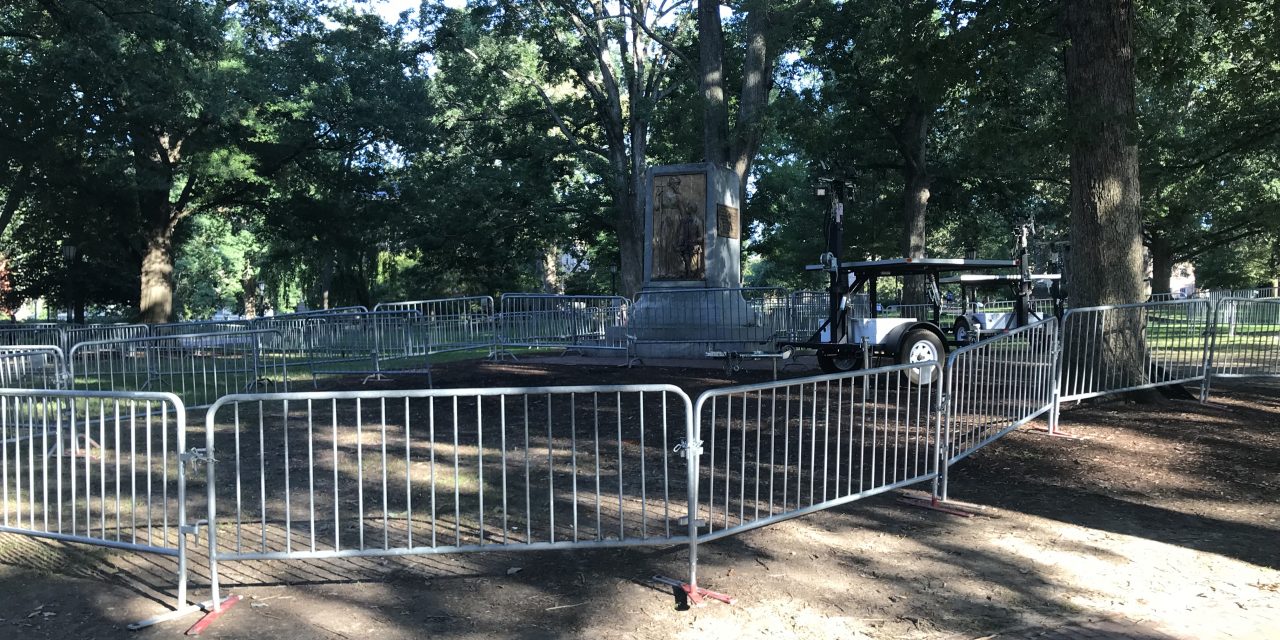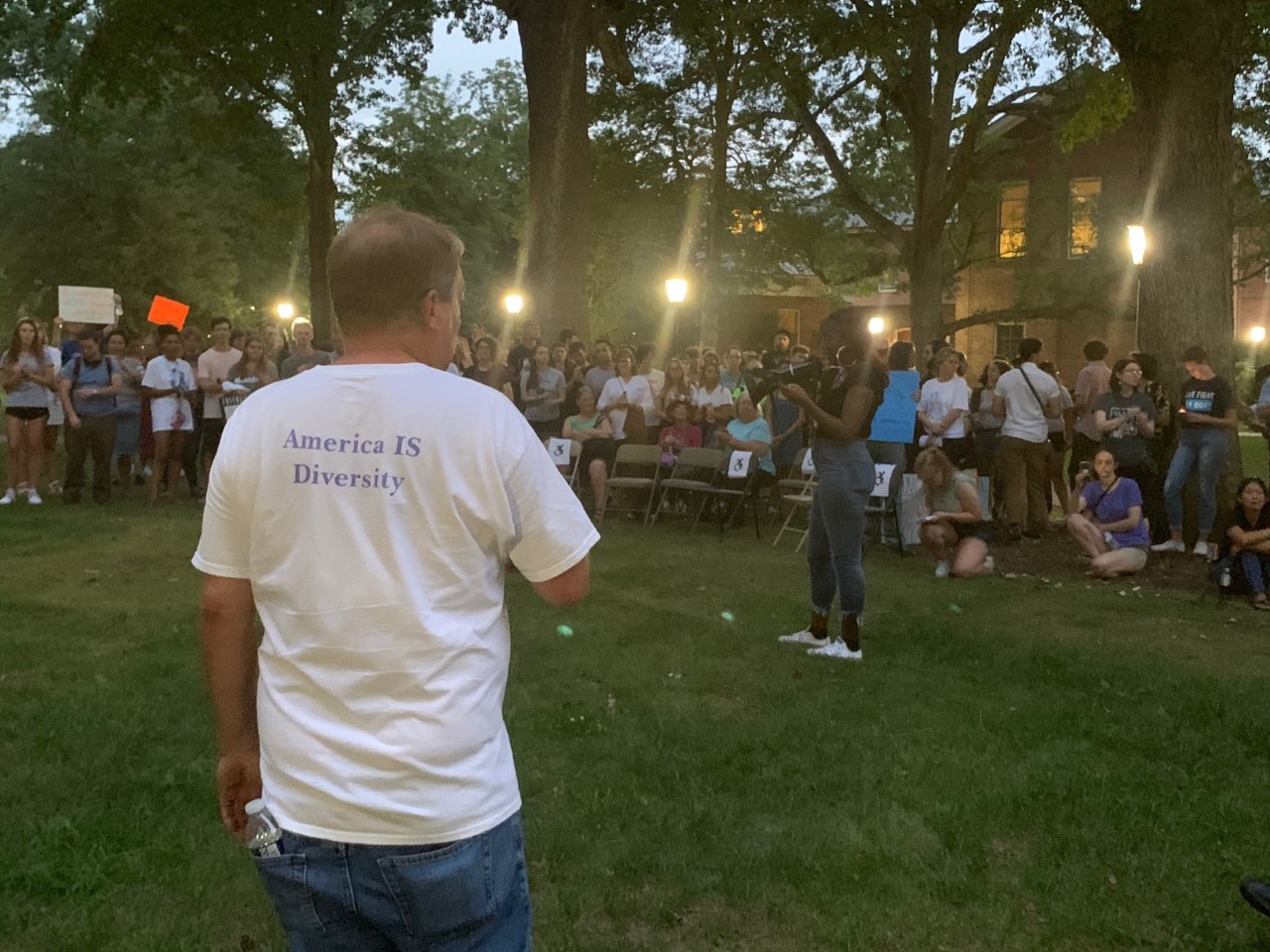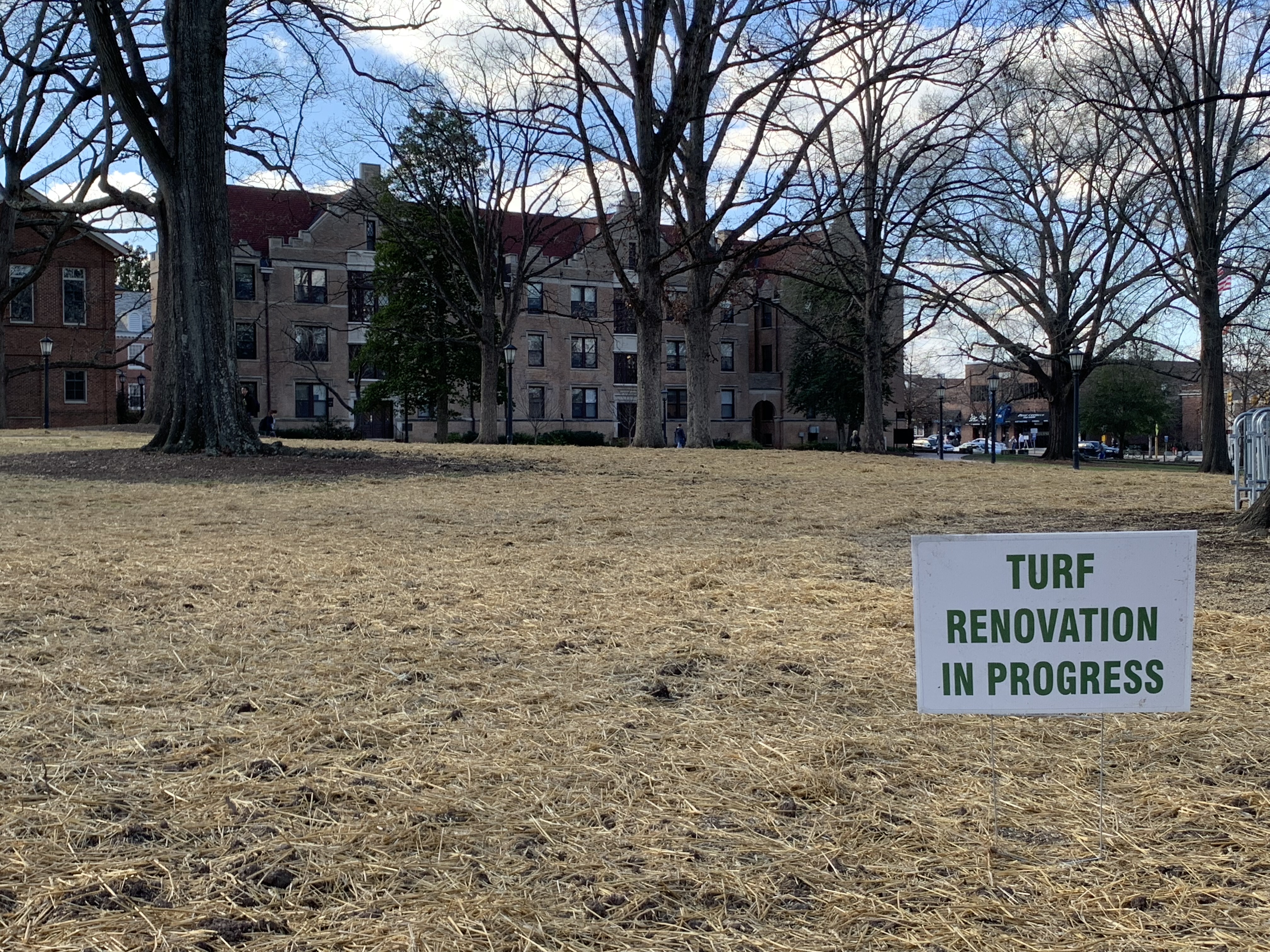UNC – Chapel Hill is hoping to construct a new $5 million dollar building on campus to house the Confederate monument known as Silent Sam and develop programming for exhibits and teaching materials.
The statue was pulled down from its pedestal on McCorkle Place in late August by protesters who had been calling for its removal.
UNC – Chapel Hill had until Monday to submit its plan for the disposition and preservation of the monument to the UNC System Board of Governors.
“We do want to get this right,” UNC – Chapel Hill Chancellor Carol Folt said Monday, “and we believe we have.”
Folt was speaking at a special meeting of the campus Board of Trustees. The board met in closed session for roughly one hour before the presentation of the final proposal.
Four pieces of the recommendation include preserving the artifacts, continuing expansion of historical contextualization on campus, establishing a University History and Education Center – where Silent Sam is proposed to be housed – and creation of a McCorkle Place Gateway.
The university brought in security experts from across the country, Folt said, who came to the conclusion that any outdoor home for Silent Sam would continue to cause public safety issues and that a new freestanding facility with state-of-the-art security technology would be preferred.
Folt and several members of the Board of Trustees reiterated on Monday that their preference would be for the statue to be moved to an off-site location, but they also maintained that those options were not feasible thanks to a 2015 law that prevents the movement of objects of remembrance.
“I have a preference to move it off campus,” Folt said when speaking with reporters after Monday’s meeting. “But, like everyone here, I swore to obey the law. And sometimes you don’t agree with laws. But I don’t have the privilege of choosing which laws I agree with and which ones I do not.”
Folt said 20 sites were evaluated as possible locations for Silent Sam, but the administration ultimately decided a new building on the main campus at Odum Village was the best option. Work has been ongoing in recent years to demolish some buildings at Odum Village, which had been the former home of married student housing.
Student Body President Savannah Putman voted against the proposal, saying the monument should not be on the campus in any capacity.
“While I do believe full-heartedly that this is the best on-campus location that the university leadership and the board were able to come up with,” Putnam said, “I still don’t think it meets the needs of students.”
Putnam was one of two votes against the proposal, along with Allie Ray McCullen. McCullen gave no reasoning for his no vote during the meeting.
Folt said roughly 5,000 public comment submissions came into the university over the last few months regarding the future of the monument.
Bill Keyes, the lone black member of the board, said he would support the plan but criticized the charge given to the university as being too narrow. He said it did not allow the university to consider the moral and ethical issues associated with the statue.
“The monument was erected more than 100 years ago, in 1913, during a period in which white racists were reasserting their domination over black people and using various means – such as the erection of statues like Silent Sam – to promote white supremacy,” he said.
Keyes went on to say that while the monument was described as a war memorial, he could not look past the cause of the Civil War, slavery.
“This monument is a reminder that black people were owned by white people as property,” he said, “and that the institution of slavery was enforced by unconscionable brutality for hundreds of years.”
Folt said no funds had been identified for the construction cost of the new facility, which officials said could be completed by mid-2022. But the chancellor said that would be a priority moving forward with its funding requests to the Board of Governors and North Carolina General Assembly. An additional $800,000 in recurring funds were estimated to be needed for programming costs for the new facility.
Folt said the UNC System Board of Governors had allowed the campus the space needed to move through this process.
“They didn’t ask us to approve it before we gave it to them,” Folt said. “It was a very clear and honest process. And now we’ll go forward working with them in the coming time.”
The recommendation from the campus will now go to the UNC System, with the Board of Governors expected to discuss the plan at its December 14 meeting.







